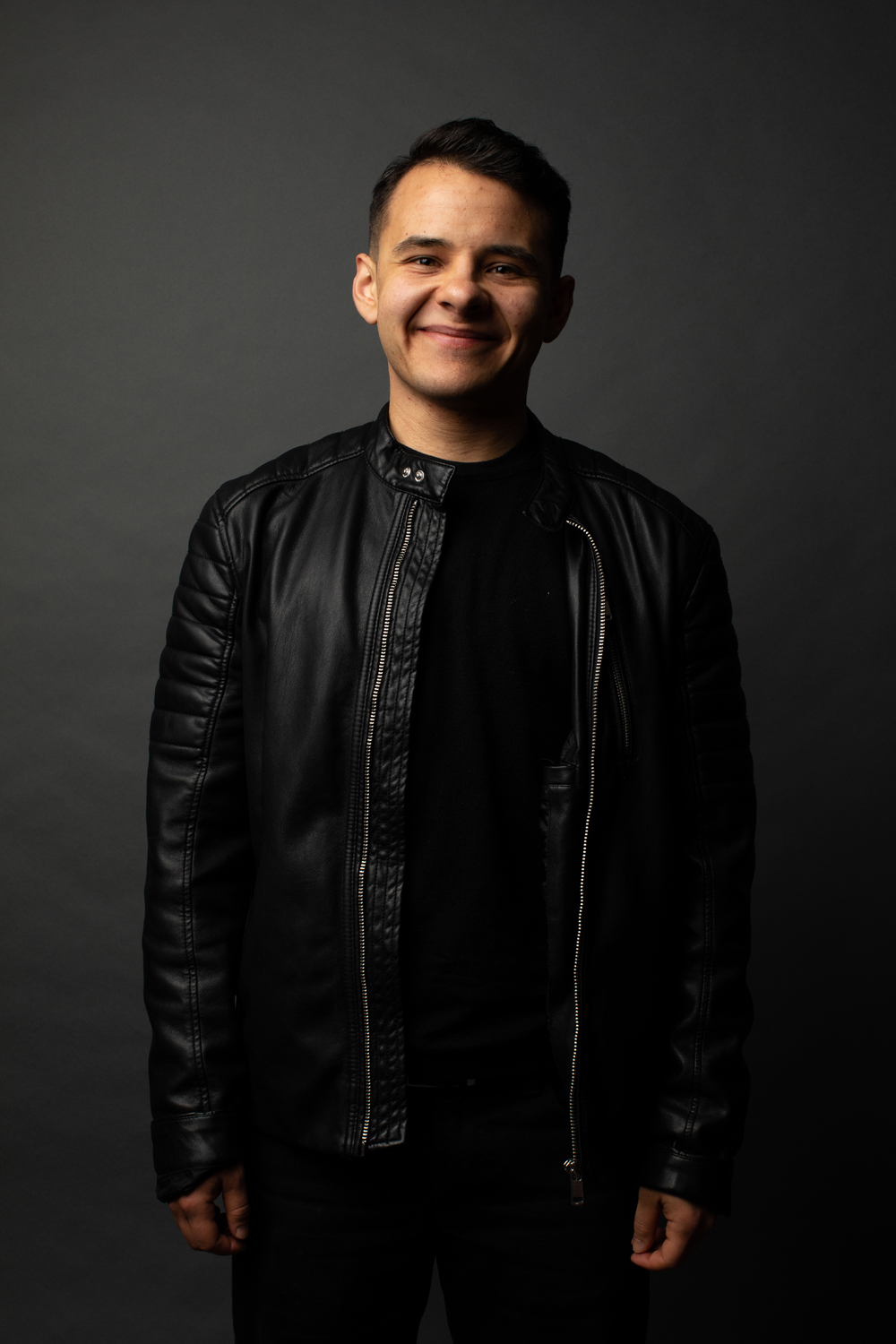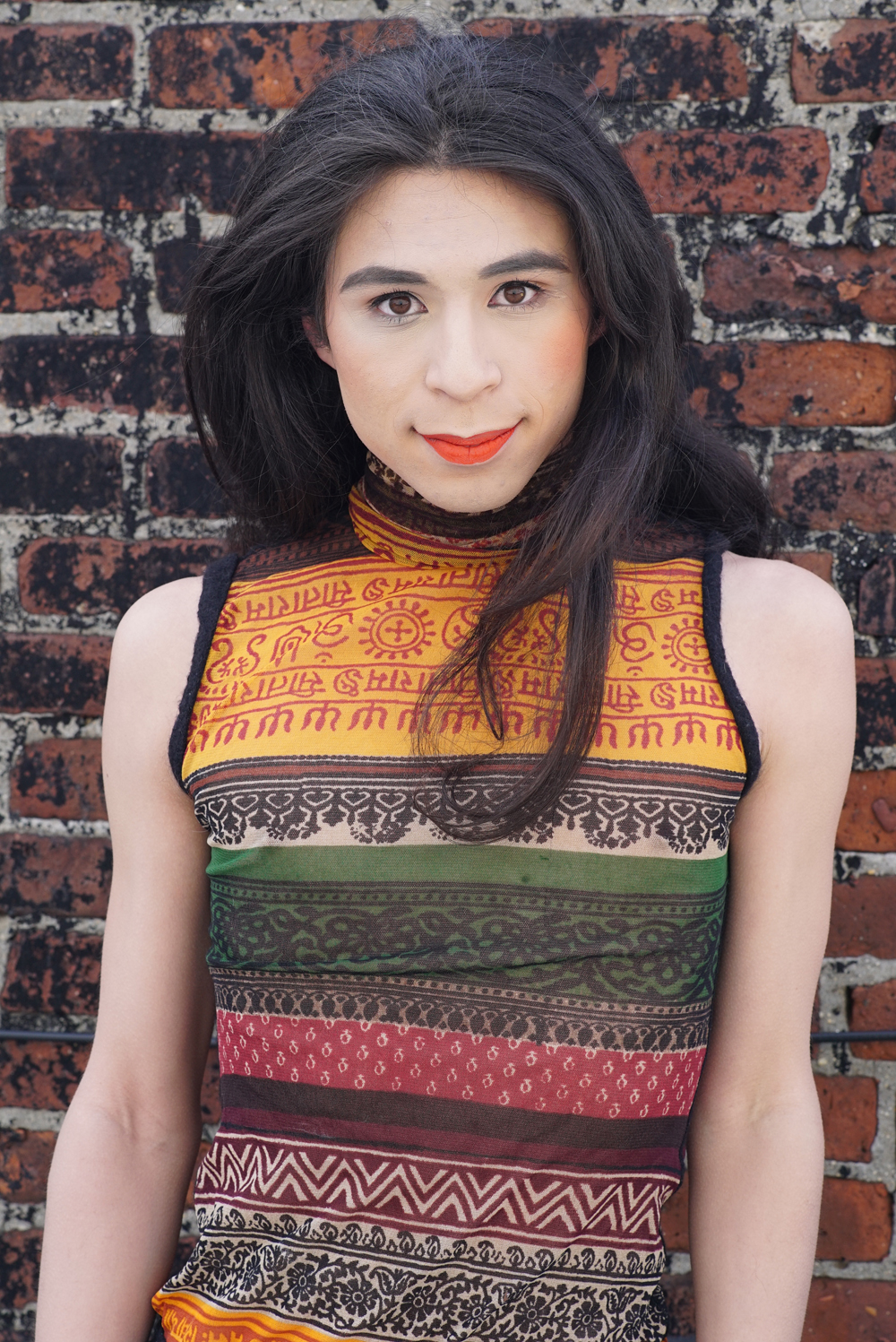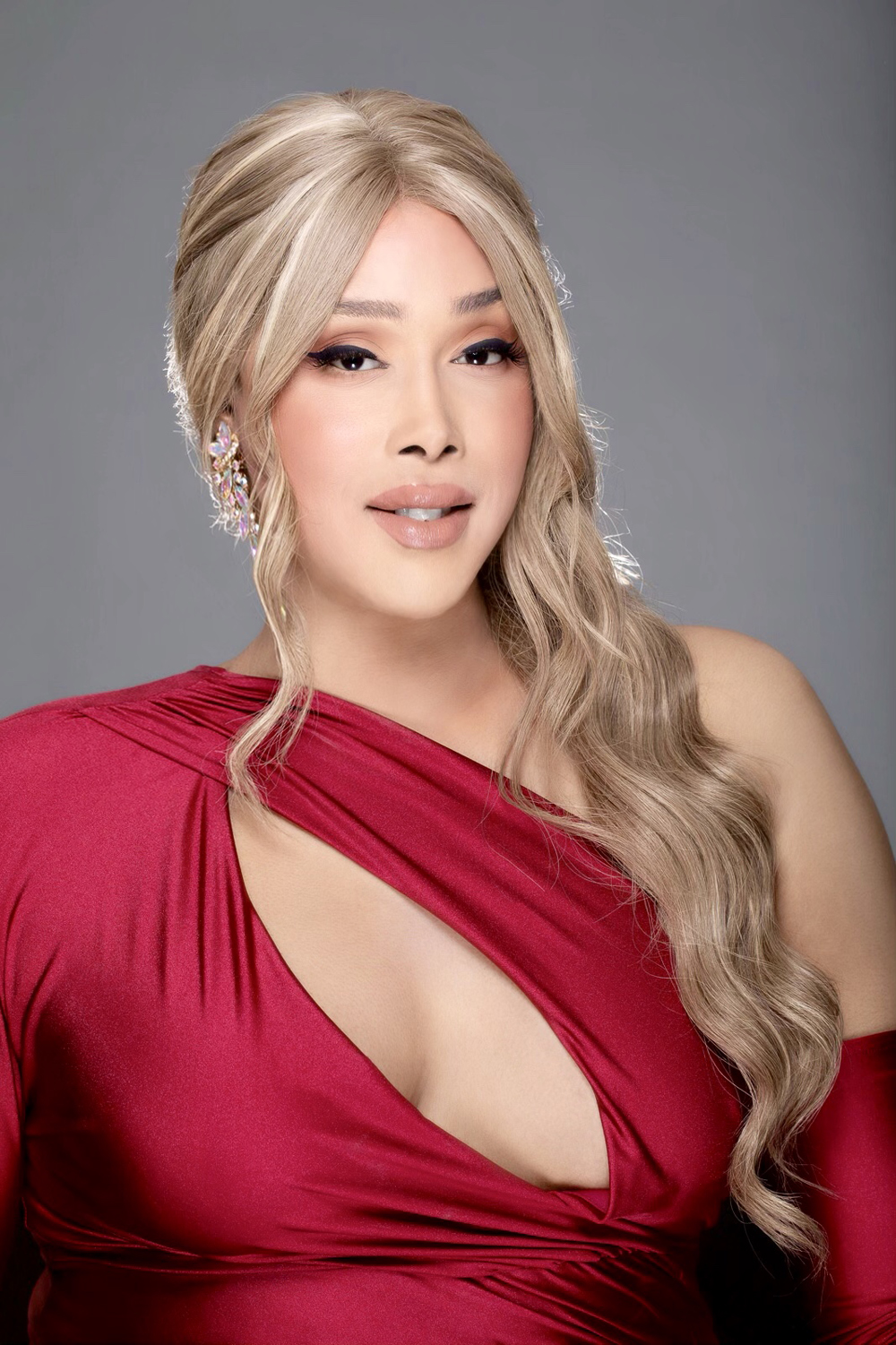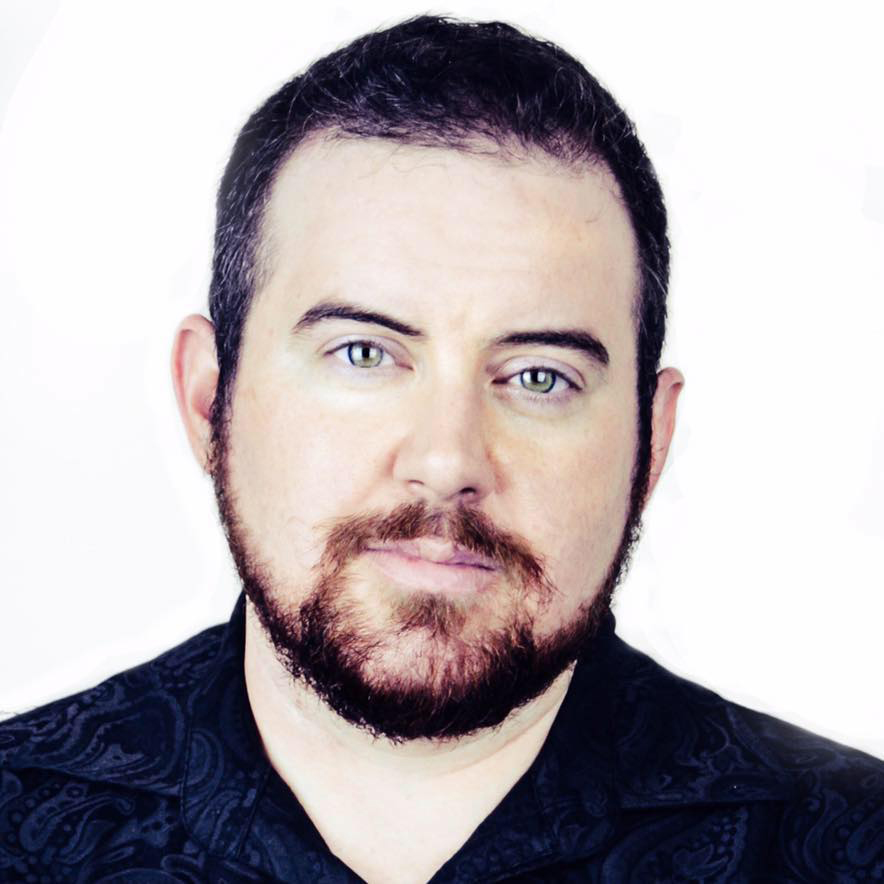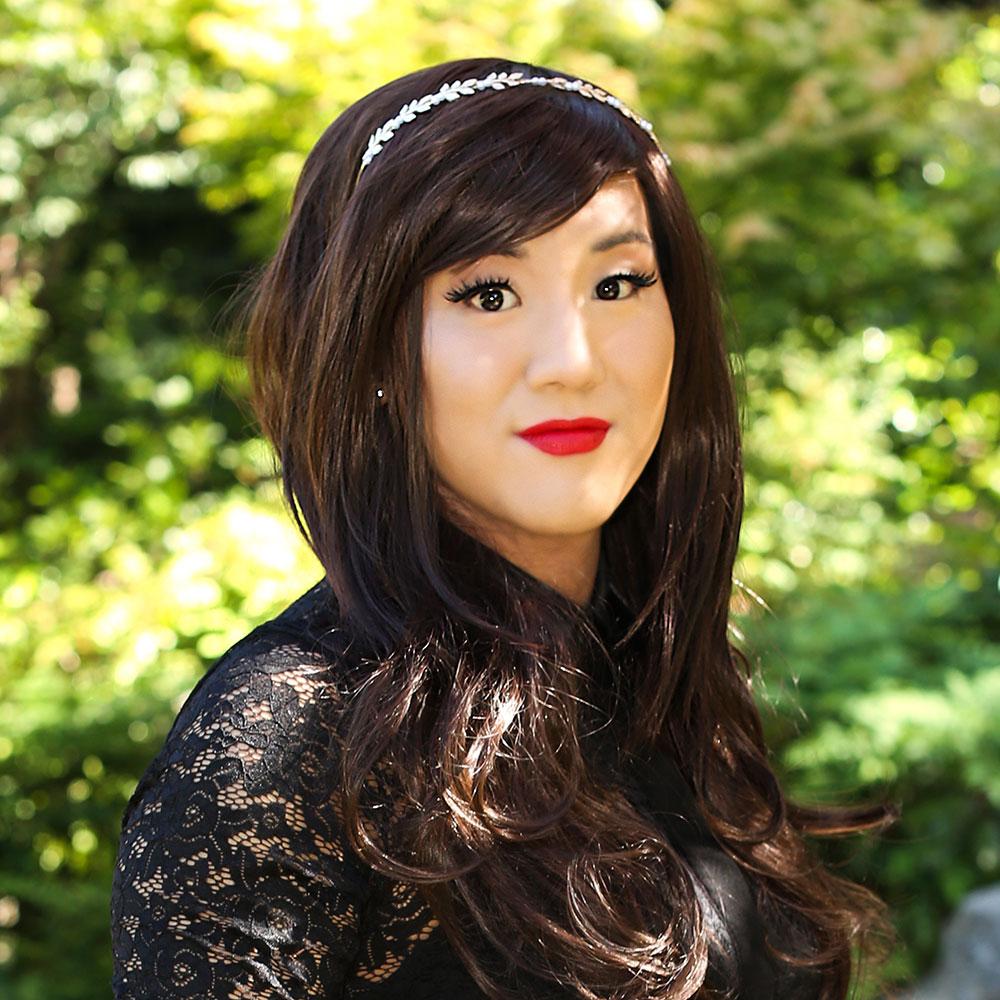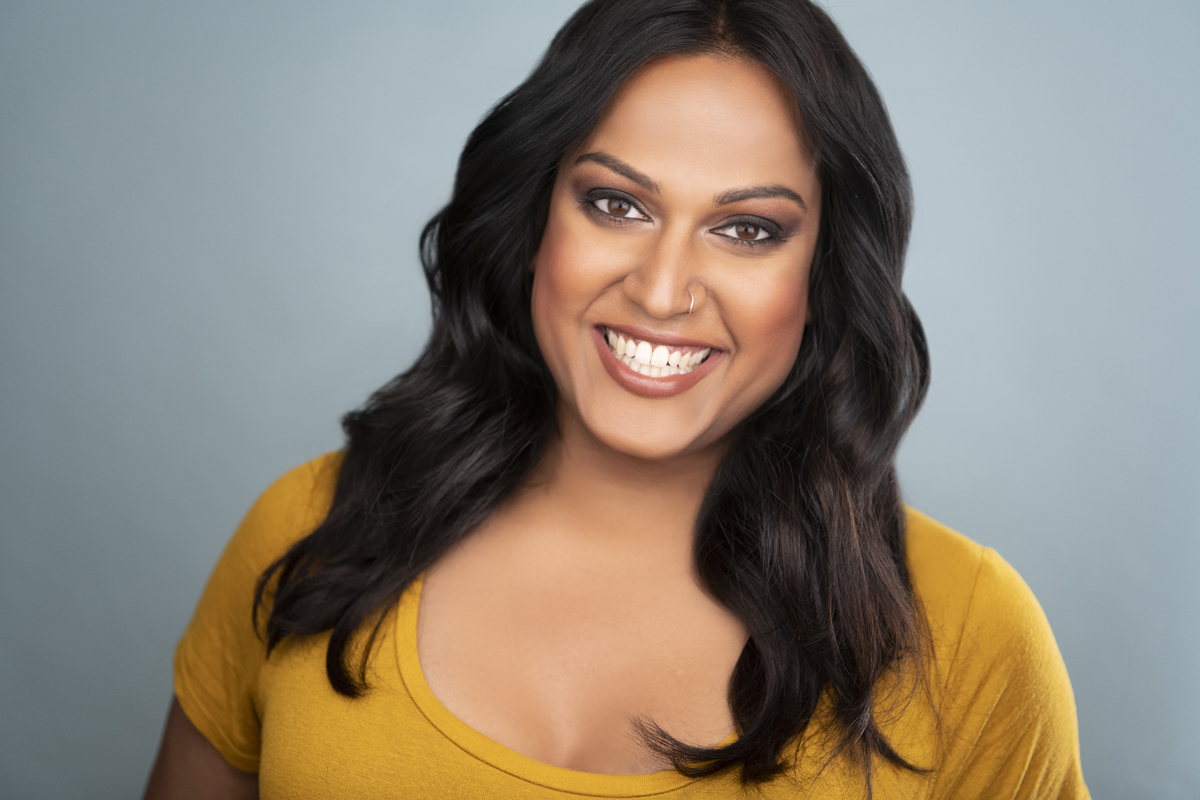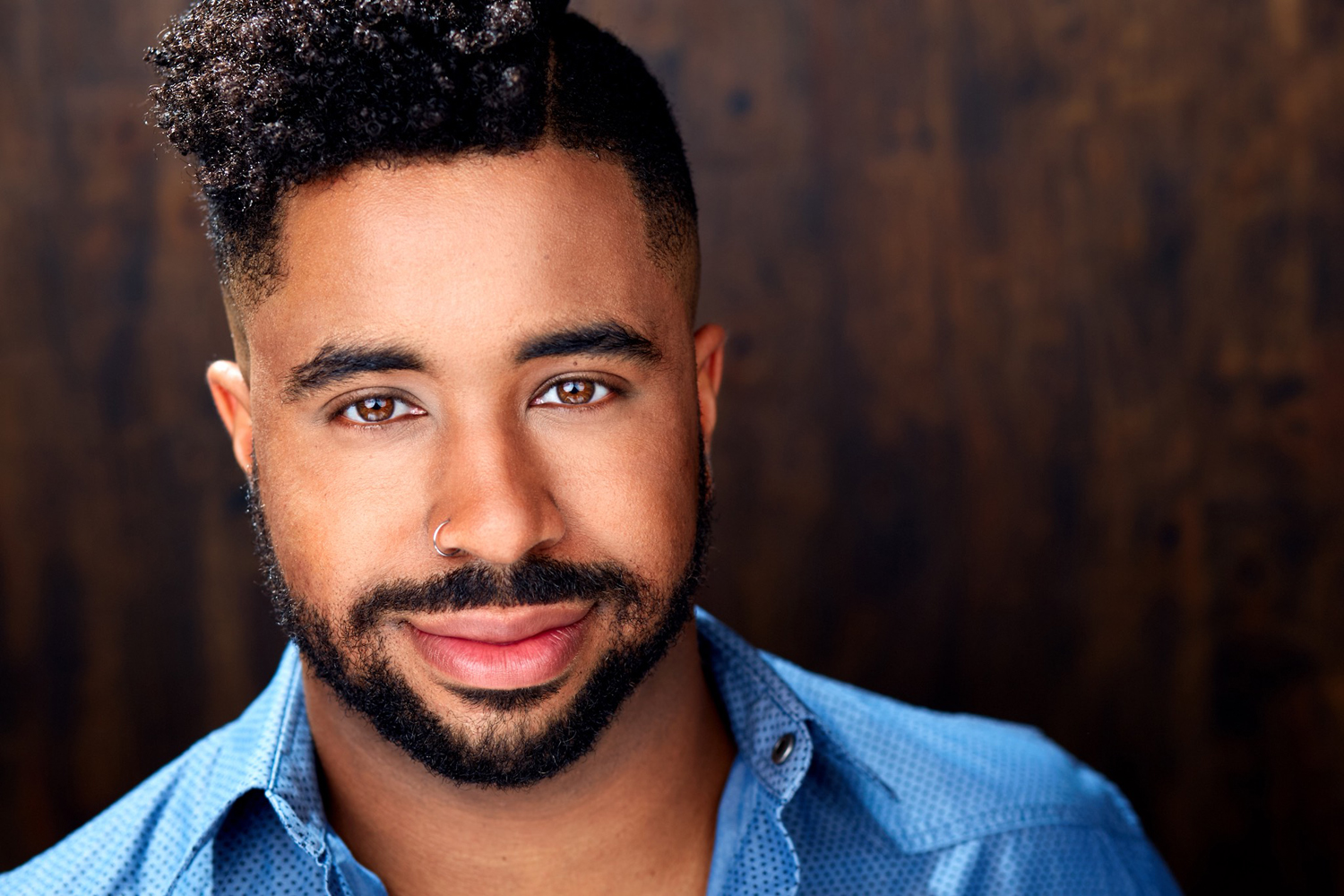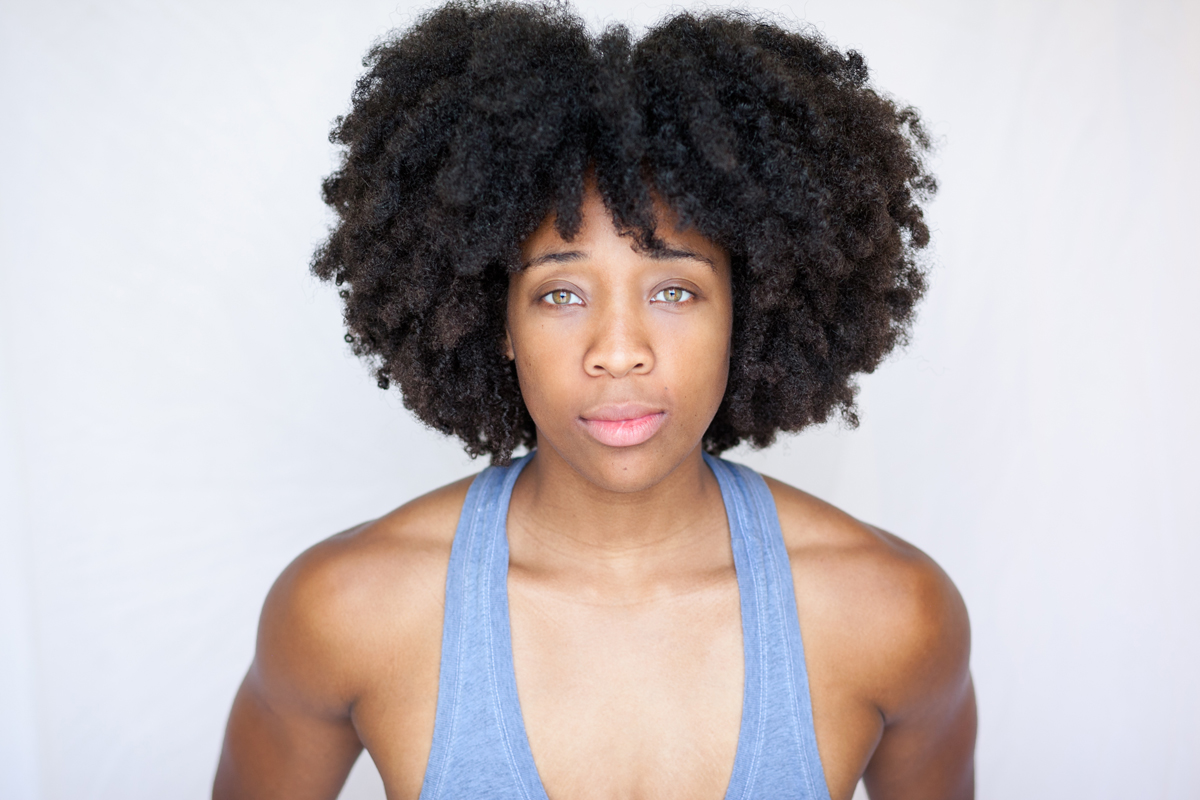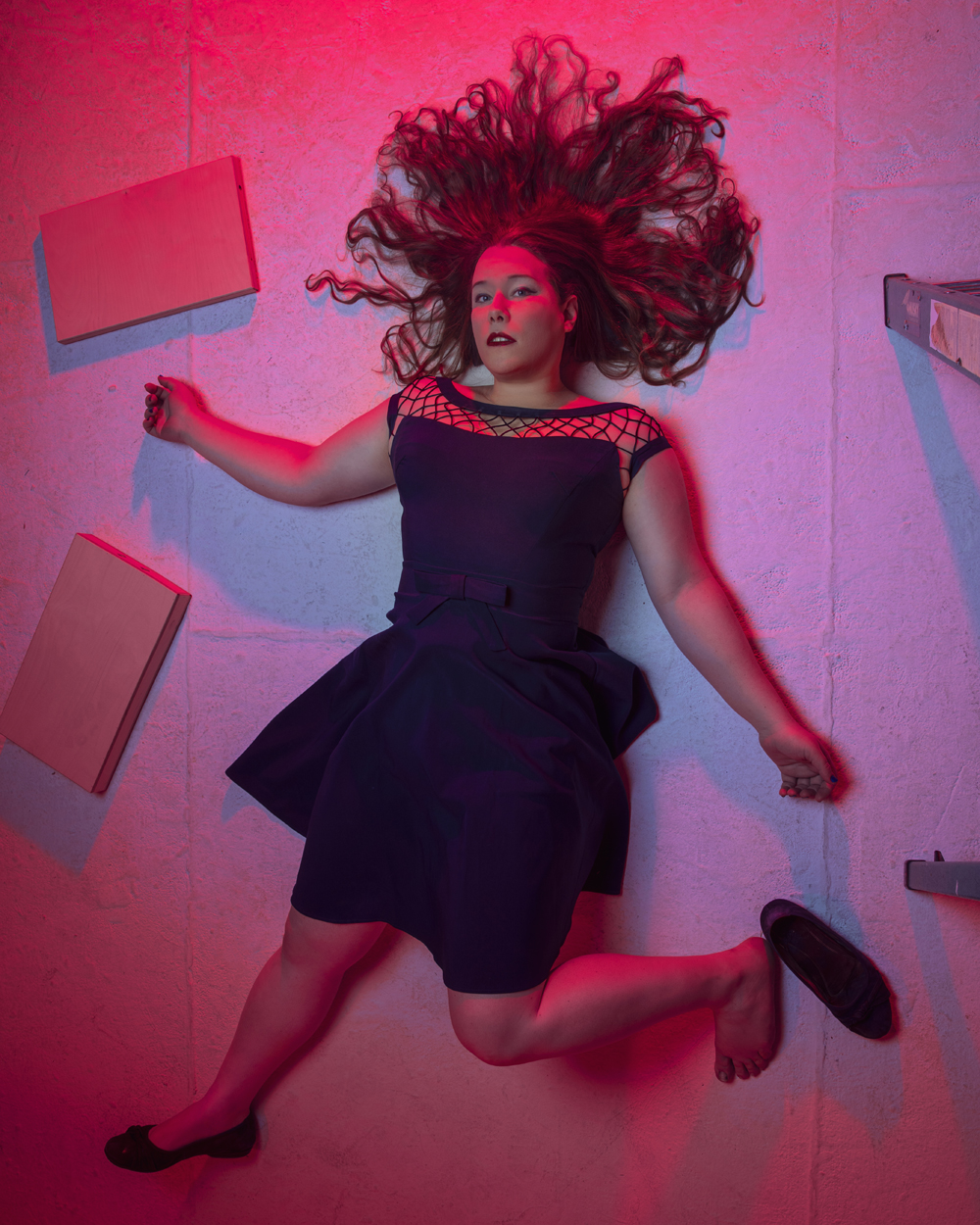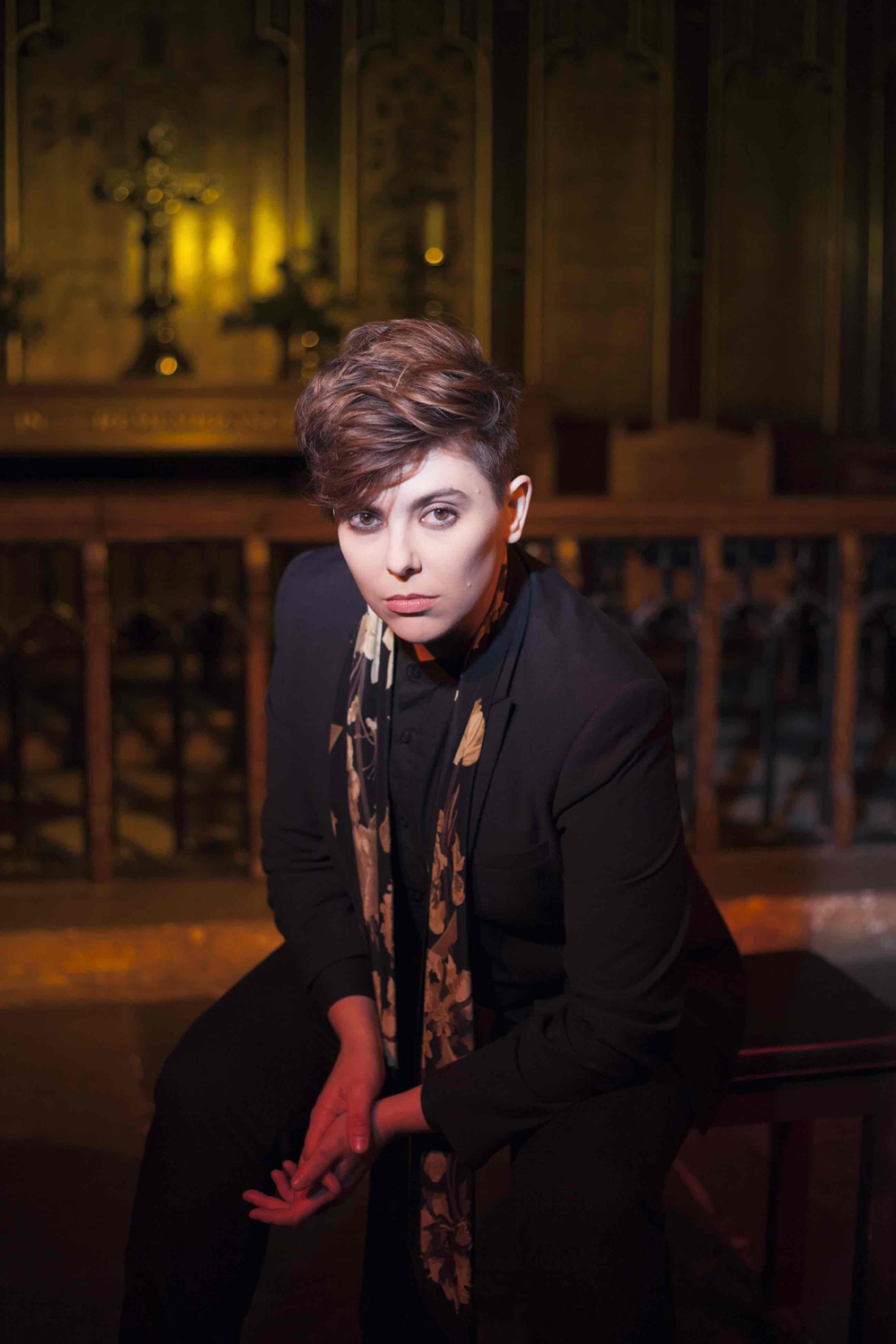Towards a Framework for Responsible Trans Casting Part 2: The Performers
Introduction
If you’ve met one trans person, you’ve met one trans person. Which is to say: If you want to glimpse the diversity of trans experience, you need to talk to a lot of different trans people.
So that’s what I did. The artists interviewed for this article[1] have performed everywhere from Germany to San Francisco, in grand opera houses and black box theaters, in revivals of standard repertoire and world premieres; they are different ages, at different points in their careers; they have different genders, and different ethnicities. Their voices capture a broad cross-section of contemporary trans singing theater communities. Where they disagree, they illuminate important tensions. Where they agree, they point to robust patterns that transcend the specifics of any one production and the artistic personalities involved. Let’s hear what they have to say. (I strongly encourage you to read the first part of this series before proceeding, as it defines many of the terms thrown around in the discussion below.)
Varying Experiences: Location, Medium, and Scene
The constant decontextualized churn of social media can obscure the very real differences between different places. In the general wash of Twitter, for example, it’s easy to miss the fact that one of the more virulent strains of pseudo-intellectual trans-antagonism[2] comes primarily from the UK, and is relatively scarce among US intelligentsia.[3] To get a feel for what it’s like in a place, you still do have to go there.
“When I’ve done work in the UK, there have been discussions about my transness that just don’t happen in Germany,” said Holden Madagame, a trans tenor currently living in Germany. “Nobody cares in Germany, for better and for worse.” Lucia Lucas, a transfeminine baritone who has also worked internationally, has found distinctions within countries as well: “As far as audience reaction is concerned, it totally depends on the region. Even in Germany, if I do something in Karlsruhe versus Wuppertal, I’m going to have a completely different audience reaction.”
Unsurprisingly, given its size, the United States has similar regional differences. Aneesh Sheth, a transfeminine performer who has worked both on stage and on screen, noted differences between NYC and LA: “LA is very focused on gender equality, so it’s very much about the gender binary, closing the wage gap, and uplifting women in the wake of the #MeToo movement,[4] and that’s all incredibly important, of course, but transness isn’t a thing there in the way that it is in New York.”
Even within one city, actors may feel drawn to one medium over another based on how trans-friendly the workplaces are. Samy Nour Younes is a transmasculine actor who has worked in both musical theater and television, and he says that “film and TV are making room for me faster than theater is, but I want to be in theater.” This has been a fairly recent development. Two years ago, he wrote an op-ed about the lack of room for diverse trans representation in theater and film; now, he says, “Film and TV have quickly proven me wrong, and theater has not budged. My struggles are still the same as they were two years ago.” CN Lester, a London-based trans performer, composer, and impresario who has been producing a regular showcase of trans talent since 2011, has seen audiences change: “General audiences definitely know more about trans issues than they did then, and (for our particular audience demographic) seem to care more—but [Transpose] also attracts more hostility now that it’s bigger.”
Other artists drew distinctions between different kinds of theatrical spaces. “Every Monday, I’m at Club Cumming [a queer cabaret venue] until 4 a.m. because it’s a space where I don’t have to explain anything that I’m doing. When you’re on that stage, it actually doesn’t matter if what you’re doing is ‘castable’ or has any capitalistic value. Having space to do that is so important for me as a performer,” says Jordan Ho, a genderfluid nonbinary transfeminine artist who has performed everything from opera arias to experimental devised works. Lucas expands on the kind of artistic liberation that can be found in performance spaces outside of the commercial mainstream: “Queer theater is where I get better. When you don’t have an entire opera machine relying on you to be perfect when you walk in the door, there’s more space to play.” Sheth discussed a particularly liberatory experience at an indie theater festival in NYC, then grew rueful: “I don’t know if that would ever translate into a larger commercial space.”
These kinds of out-of-the-mainstream shows tend to go up on shoestring budgets with little rehearsal, which means performers can’t sustain careers doing only this kind of work. Venturing into more mainstream spaces, however, often means taking on work that handles trans issues badly. “[Trans actors] need money,” Younes said. “I’ve taken plenty of jobs that were objectionable because I needed to pay my rent.” Breanna Sinclairé, an operatic soprano who made headlines singing “The Star Spangled Banner” at a Major League Baseball game in 2015, echoed the sentiment: “I’ve done gigs where I’ve been respected, and I’ve done gigs where I have not been respected. But at the end of the day, we’re professional singers; we just have to keep going.” Most of the performers I spoke to expressed similar sentiments of resigned fatalism, sentiments aptly summarized by soprano Alex Bork: “I’d rather take [a gig I don’t like] than not be working at all.”
Playing “Cis”
Because roles explicitly for trans performers are still rare, stepping into these mainstream spaces often means playing roles that weren’t written with trans people in mind. While most of these characters aren’t explicitly cis, the historical (and ongoing) erasure of trans people means that most directors, casting directors, audiences, and so on assume these characters are cis. This will be discussed at greater length in the final installment of this series, but is worth flagging here.
Unsurprisingly, many of the people I spoke with don’t fully trust cis directors to make such roles trans. “I plead with directors all the time, ‘Please don’t make this a trans story,’” Lucas says, of playing roles like Don Giovanni that are usually cast as cis men. “I don’t say this, but I just don’t think they’re going to be able to handle it well.” Sinclairé also suggested taking a circumspect approach: “I just want to be hired as a female singer. I’m a musician first, trans second. It doesn’t always have to be ‘trans opera singer’ all the time.”
That said, sometimes actors take their own initiative. “I always secretly put myself into [whatever role I’m playing],” confides Esco Jouléy, a nonbinary actor working in New York. Marques Hollie, a nonbinary opera singer and writer, talked about finding resonances between their own experiences and the Baker in Into the Woods. “The Baker really wrestles with a lot of his patrilineal trauma; he has this really complex, rich inner life.” Coincidentally, Younes recently played Jack in Into the Woods, and while neither they nor the production team explicitly discussed playing Jack as a young trans boy, “there were people who came to the show and read it that way. And if they want to, I think that’s a valid interpretation.”
Indeed, several performers described this as an opportunity, not a challenge. “I honestly can’t think of any specific problems navigating the differences between me and the characters I play,” Lester said. “That’s the challenge and joy of performance.” Madagame sounded almost playful: “I usually don’t discuss it explicitly with the director, I just make certain choices and see how they react. Sometimes they ask me to do something else, but usually there’s a little bit of compromise.”[5]
These roles raise one of the biggest issues of trans representation in singing theater, the issue that poses a unique challenge for these works compared to works without music: gender and vocal range.
Gender and Vocal Range
Kristofer Eckelhoff is a trans voice teacher in NYC, and he is constantly grappling with the inadequacy of standard vocal terminology when it comes to trans singers. “I’m still trying to develop a terminology that works.” Standard labels like soprano or baritone have strongly gendered connotations that may alienate or affirm. “For trans men who are early on in their transition, they may not like the term head voice, but they might like the word falsetto because it’s a more gendered term.” Meanwhile, nonbinary students may have even fewer options. “It’s tricky. I don’t have a blanket way to talk about it. My nonbinary students don’t really like any of the terms; it’s easier to use numerical note names like C4 to D5. But it’s still messy. It’s really important to address the individual singer.”
That’s harder to do when you’re writing an open casting call. As a workaround for this, Aiden Feltkamp proposed a new vocal categorization system in this very publication. Their whole series is a worthwhile read, but I confess that I find their proposal rather fiddly—the more boundaries you have, the more boundary squabbles—and my default, as a composer, is increasingly to use note names to delineate the ranges of parts that I write.
It will come as no surprise that trans singers aren’t particularly fond of linking vocal range with gender. “The piano doesn’t have a gender,” Jouléy quipped, noting the breadth of its range. Lucas sees her different vocal registers and colors—she’s working to develop her contralto—as tools to illuminate characters’ emotional states: “If we’re doing The Danish Girl,[6] and it’s the first party where Lili goes out presenting female, maybe we can play with where that sits in the voice.” For her part, Sinclairé sees vocal range as an individual matter. “It’s in your body”, she said. “You work with what you have. I know trans women who sing soprano and develop that, and there are trans women who like to sing in the lower register and develop that. It’s who you are as a person; that’s authentic singing.”
There is an important asymmetry here: testosterone lowers the human voice, but estrogen does not raise it. This means that AMAB trans people can begin taking hormones without having to interrupt their careers to retrain,[7] but AFAB trans people cannot.
“Being a transmasc person, you lose a lot of your voice in your first year on hormones,” Eckelhoff said. Many of his students come to him in this first year, and he reassures them that it will be O.K., their voices will come back. “But this is where people run into problems with cis teachers, because teachers assume they’ve ruined their voice.”
This resistance from cis teachers can reach dangerous extremes. Eckelhoff told of one student whose teacher forced him to delay starting hormones until after graduation because said teacher didn’t want to deal with the changes that hormones would cause. In other words, this was a teacher forcing a student to postpone potentially life-saving medical treatment so the teacher’s job would be easier. This is not an exaggeration. The lifetime suicide attempt rate for trans men in the US is 46%, compared to a baseline rate of 4.6% in the general population. Hormone therapy is strongly and consistently correlated with a marked improvement in mental health for trans people who pursue it. Individual trans people may, of course, decide not to start hormones because of the changes hormones will cause to their voice, but it is completely inappropriate for a voice teacher to force this decision on them.
At the end of the day, however, a human voice is a human voice. “Trans voices are really not that different than cis voices,” Eckelhoff affirms. This goes for the ranges trans people sing in post-transition, but it also goes for the variety that exists among cis performers. Every singer I talked to for this piece mentioned countertenors, contraltos, or both. “Bea Arthur is my favorite baritone,” Ho joked, discussing the roles xe’s studied during xyr vocal training[8], “I’ve been going through the Sondheim canon and learning all the female roles—it’s really interesting to see how many cis women in the musical theater canon were actually just baritones.”
Harassment, Assimilation, and Other Unpleasantries
When discussing the question of gender and vocal range, Sinclairé told the story about singing for a composer who had assumed that she was a countertenor, not a soprano. “When I opened my mouth and sang, he was speechless.”
That encounter ultimately ended well, but the interactions between cis and trans artists can become extremely fraught. “I was in a master class once where someone leaked information about me beforehand,” Bork recounts, “And [the guest teacher] spent the entire class berating me and telling me no director would ever cast me. Afterwards, I had to take a taxi home—I couldn’t walk.” She also discussed several instances of appalling treatment from fellow cast members, including deliberate misgendering and riffs on stock tropes of trans people as sexual predators. Sinclairé expressed frustration at techies during sound checks: “Some of them don’t think I’m a serious singer, so they like to mess with the electronics. It’s weird subliminal stuff that happens.”
Sometimes, the overall atmosphere leads to self-censorship. “There’s a rigidity of gender presentation in auditions,” Madagame said. “I have privilege coming out the ass, but I still feel it in small ways: I can’t have certain hairstyles, I can’t dye my hair, I can’t have nearly as many tattoos as I would like. All of these things that queer and trans people gravitate towards, aesthetically. You’re forced into this aesthetic, and it’s really uncomfortable.” These queer and trans aesthetic markers may seem trivial, but in a world where growing up trans is still such an alienating experience, and where trans people still have to fight so relentlessly to present outwardly as we know ourselves to be, being cut off from visual flags of communal belonging and forced into a rigid gender box can be a soul-crushing experience.
Given all this, it’s no wonder many choose not to stick it out. “It is devastating how much talent there is that no one’s going to see,” Younes said. For all the perspectives I have tried to gather here, there are so many more that we will never have.
Without impugning the abilities, experience, or work ethic of any trans performers, it’s also true that these barriers to trans careers in singing theater—clueless or hostile teachers, antagonistic workplaces, discrimination based on nonadherence to gender stereotypes, the lack of trans roles and the unwillingness of cis casting directors to consider trans performers for roles traditionally assumed to be cis—mean that trans performers will often have less formal training and scanter résumés than cis performers at the equivalent career stage. “I know that not every company has time to teach everyone all these things,” Ho commented. “But if a trans performer doesn’t have the music theory background or needs help learning the music, it’s worth it to teach them.”
This is a delicate point, but it’s worth pressing. Allying yourself with trans communities doesn’t just mean tweaking the language of your casting calls, it also means giving us material resources. There are real inequities in the educational and professional opportunities that trans people receive; redressing those inequities is an inextricable part of bringing our stories to the stage responsibly.
That said, transphobia is obviously not the only form of marginalization, and it is irresponsible to set about redressing it without also redressing other unjust inequities, many of which overlap in mutually reinforcing ways.
Intersections[9]
Younes, who is of mixed Lebanese and Puerto Rican descent, feels that their race and queerness are often forced to be at odds by the limited visions of those doing the writing and casting. “For Latino and Arab men,” he said, “There’s still a portrait of hypermasculinity that theater conforms to, so much so that I don’t get those roles either. It’s like I’m too brown for being trans and too queer for being brown.” Sheth, meanwhile, feels that her transness has overshadowed her ethnicity. “When people talk about me, it’s always about my transness. When people are talking about hiring Aneesh, they’re talking about hiring someone who’s trans. It’s very rarely a conversation of ‘We’re also bringing in someone who’s South Asian; what does that do for our script? For the trans South Asian community?’ There’s a whole other piece of me that’s being excluded from this conversation.”
This emphasis on transness over race can fly directly in the face of an individual’s own perspective. Sinclairé was adamant: “African American, Asian performers, we’re still not getting hired as much as our white counterparts. I feel like that’s the first barrier that needs to be broken down, before we even get to the trans issue.”
For others, issues of race and gender can’t be so cleanly separated. “I’m an average US size for white people,” Bork explained, “But beauty-standard-wise, the representation of Asian people in the West is skinnier, and so even if I’m the same size as my colleague on stage, people are going to call me out for being tall or fat first. And I’ve had that happen before, people telling me that I’m not castable because I’m not feminine or demure. And they’re not saying that to my colleagues who are the exact same proportions as me but who just happen to be white.”
These critiques point to deep structural issues, many of which are exacerbated by the reliance on wealthy white donors who actively resist structural change. “Opera and classical music are still very much driven by older white men,” Hollie says. “A lot of these gatekeepers don’t know how to behave and aren’t trying to be better people. And they’re not prepared to welcome talent outside their comfort zone.” Younes sees similar dynamics at play in musical theater: “There are a lot of trans creators making work, but that stuff doesn’t get the big commercial funding. I love theater, but it hasn’t aged well. The boards haven’t changed for decades, they’re beholden to their aging pool of subscribers who can complain and pull their donations if they don’t like something, so they hew towards the more conservative plays. The most daring thing they can do is put an interracial gay couple on stage. And for me, the product of an interracial couple, I’m like, ‘That’s not daring, that’s life.’”
But Younes also sees these disparities being perpetuated within the queer theater community itself. “If you’ve opened a door, don’t shut it behind you. There are a lot of LGB people in theater who have done that. That’s not me trying to pit myself against them, or to say that it’s easy—I know quite a few people who are not out as gay in theater—but I also know a lot of cis gay people who got what they wanted and shut the door behind them for everybody else. I would hope that a win for one of us is a win for all, but don’t forget to take the rest of us with you.”
Some Rehearsal Room Advice
The previous sections have focused on problems, many of them large structural problems that will not be swiftly solved. Even so, gentle reader, there are steps you can take to make your rehearsal rooms more welcoming to trans individuals.
“It’s a matter of respect, respecting the artists in all ways,” Sinclairé said, when I asked what makes for a welcoming rehearsal room. One key way of respecting trans people is using the right pronouns. To do this, of course, requires knowing what the right pronouns are. The quickest way to be certain of this is to ask, and so the practice of sharing your pronouns along with your name at the start of a rehearsal is becoming increasingly standard in queer-centric spaces.
By this point, it won’t surprise you to learn that not all trans people are on board with this.[10] For some, being able to share pronouns in this way is essential. “I really like the pronoun thing,” Ho said, “And I like the ritual of it at the start of every rehearsal, just a check in. Because there are days where I’m so tired I don’t even want pronouns, just use my name today.” But having everyone go around and share their pronouns may put trans people on the spot, forcing them to decide whether to out themselves in a room full of strangers or lie about their gender and resign themselves to being misgendered in the rehearsal process. Sharing pronouns when there’s only one trans person in the room[11] can also single out and other that trans person, as Jouléy describes: “There should always be a question about pronouns. But if I’m the only one who’s going to be using ‘different’ pronouns, and you’re only doing it for me, I don’t need it! I know I look different, people are going to see that and know something’s up. If they have a question, they can ask.” A reasonable middle ground, I think, is to provide an opportunity for people to share their pronouns if they want without mandating that anyone do so. Respectfully asking any trans people involved in your production in advance how they’d like you to handle this is also a good idea.
If you need to be flexible in how you approach sharing pronouns, you may need to be even more so when it comes to making musical accommodations. As Eckelhoff pointed out, these kinds of adjustments are hardly unique to trans performers: “Tenors sing castrato roles down the octave all the time. Why can’t we do that with other roles?” Sheth called attention to accommodations cis people regularly make in re-arranging ensemble tracks to better fit their range: “It might take a little extra arranging work that people don’t want to do, but when it comes to cis people who need to jump staff lines, it’s very easy. Then when it comes to trans people, suddenly they get very in their head about it, like it confuses them somehow.”
When octave shifts and re-tracking ensemble numbers isn’t enough, you may have to change a key or two. Indeed, it’s probably best to include options from the get-go. “When you’re composing, just write alternative stuff,” Lucas suggests. Madagame explains that in the development process for Good Country,[12] composer Keith Allegretti prepared three alternate versions of Madagame’s role in different ranges. “Be flexible, don’t be fussy,” Madagame advised those planning to write for trans singers. Lester had some tough love for composers who feel changing keys or vocal lines infringes on their vision: “As a composer with synesthesia, I’m not trying to dismiss the importance of specific keys and timbres. But, ultimately, the composer is only one part of the musical whole.”
Everyone stressed the need to have more than one trans person in the room. “There needs to be a trans voice therapist, a trans vocal coach, a trans pianist present,” Sinclairé insisted. “I always look at the team,” said Jouléy, when asked about how to decide whether to join a new project. “Who’s working on it? Because when I come into the room, I don’t want any problems.”
The presence of other trans artists can make it easier for trans actors to speak up when they feel trans issues are being mishandled, but often more explicit permission is necessary. Hollie explained, “Working with directors, it’s really hard to be That Person. It can be hard to bring these things up.” Madagame said that the most helpful thing was “to have people explicitly say, ‘If you are uncomfortable with something, we want to hear about it so we can solve it.’”
Should Cis People Even Be Writing This?
Inevitably, conversations about including trans people in the rehearsal room circle back to the question of who’s writing these stories to begin with. The performers I spoke to were unanimous in their desire to see trans writers bringing trans stories to the stage; they were much more ambivalent about the role of cis allies.
Younes was the most optimistic. “Given the fact that [trans people] are a minority, it’s going to take cis people writing trans roles for us to see more employment opportunities. Obviously there need to be more opportunities for trans people to have our work produced, but simply based on the numbers, there’s never gonna be enough trans creators for the body of trans people who need to be working.” Bork was more hesitant: “This isn’t a hard rule, but I’m more cautious when people who aren’t from a particular community approach me about a project without explicitly saying they’re not from the community.”
These hesitations were often deeply rooted in having seen too many attempts from misguided would-be allies. “I’d rather not quote some of the lyrics I’ve seen,” Ho vented, “Because I understand that new musical theater writers are trying to learn, but like, learn faster.” Lester pointed out that many of these projects are bad art: “The main problem [with cis-led trans works] is that a project will be ‘trans themed’ but have no trans people involved at all. So the story is literally just a cis person’s imagined idea of how trans people live. These kinds of ‘trans’ projects aren’t just politically suspect—they’re artistically played out and stale.”
Most of the failures that these artists detailed stemmed ultimately from a limited imagination of what trans lives look like, offstage and on. “For some reason, cis writers can’t just write that a character happens to be trans and has characteristics like any other character they would write,” Sheth said. Hollie emphasized more emotional limits: “When it comes to trans representation, a lot of the works that are getting play are rooted in trauma and suffering. What about trans joy?”
One answer emerged clearly above all others: “I really hope more trans composers come out and compose full-on operas,” Sinclairé said. “That would be amazing.”
The good news is, those composers are out there. In the next installment, we’ll be turning our attention to them.
Further Reading
As with last week’s article, this post only scratches the surface of these conversations. Here are some avenues for further exploration:
- Trans vocal pedagogy is a young and rapidly expanding field. The Earlham College Transgender Singing Voice Conference is a gathering to keep your eye on, and Emerald Lessley’s dissertation has a wealth of practical information, although the terminology is not ideal.
- For a detailed look at the current state of trans representation on TV, a solid overview ran recently in Vanity Fair.
- Many of the red flags that came up in these interviews were basic questions of trans language. While I hope last week’s overview will help, it’s a far cry from a full style guide. Fortunately, the Radical Copyeditor has exactly that.
- This article relies on individual narratives to paint a qualitative picture of one tiny corner of the trans landscape. For a quantitative approach to the big picture, the 2015 US Transgender Survey is still, to my knowledge, the largest demographic survey of its kind, including specific breakdowns of the intersections of transphobia with (some) other forms of marginalization.
- If you happen to live in New York City or Chicago and are looking to connect with trans performers, you could do worse than checking out the next installment of your local Trans Voices Cabaret.
Notes
1. Full disclosure: I have worked with several of these artists in the past, and have plans to work with some of them in the future. I write from the perspective of someone who is deeply embedded in this community.
2. The people spouting these views are often called TERFs, or Trans-Exclusive Radical Feminists. TERF was originally coined as a technical shorthand for transphobia rooted in radical feminist thought, but is now thrown around pretty freely to refer to anyone who holds any trans-antagonistic position whatsoever, with the predictable dilution of its meaning. This has resulted in a confusing multi-player tug-of-war, with some advocating it be restricted to its erstwhile technical use, some accepting the diluted meaning, some trans-inclusive feminists arguing against it on the grounds that trans-exclusion is inherently unfeminist (a position often built on unfamiliarity with the specific ideology of radical feminism), and TERFs mendaciously claiming the term is a slur. (It is not.)
3. Then again, as was noted in the article linked above, these TERFs have been cited in at least one amicus brief before the US Supreme Court that could make it legal to fire any woman, including a cis woman, for wearing pants, so there’s some trans-Atlantic dialogue going on here.
4. Of course, trans women also experience sexual harassment in entertainment-industry workplaces and steep wage disparities, but there’s no denying that the highest-profile figures in these fights tend to be cis white women, and these women haven’t always been the most adept at including other women, let alone trans men and nonbinary people, in their gender activism.
5. The technical term for an actor bringing their own life experiences to shape a role and make it theirs is, of course, acting.
6. An adaptation-in-process of the film about Lili Elbe, currently slated to be composed by Tobias Picker specifically for Lucas in the title role.
7. Some AMAB trans people, of course, do retrain to sing at a higher pitch, but they won’t necessarily lose access to their lower registers if they do.
8. For a full breakdown of the xe/xem/xyrs pronoun set, see this guide. To practice using it (as well as other pronoun sets that are less familiar to you), go here.
9. This section was largely guided by what my interviewees shared with me, and as such, it deals fairly exclusively with intersections of race and transness. Obviously, other axes of marginalization exist, but many, like class and disability, are frequently invisible, and I did not think it appropriate to ask invasive questions about, for example, people’s legal, medical, and economic histories. The intersections not included here are just as important as the ones that are, but I am afraid I must leave it to others to fully explicate them.
10. Indeed, in the week before I sat down to write this, trans Twitter was consumed with an endless, acrimonious debate over this practice.
11. As will be discussed at greater length below, this is not ideal practice.
12. A chamber opera about the life of Charley Parkhurst, which will be discussed at greater length in next week’s installment.



